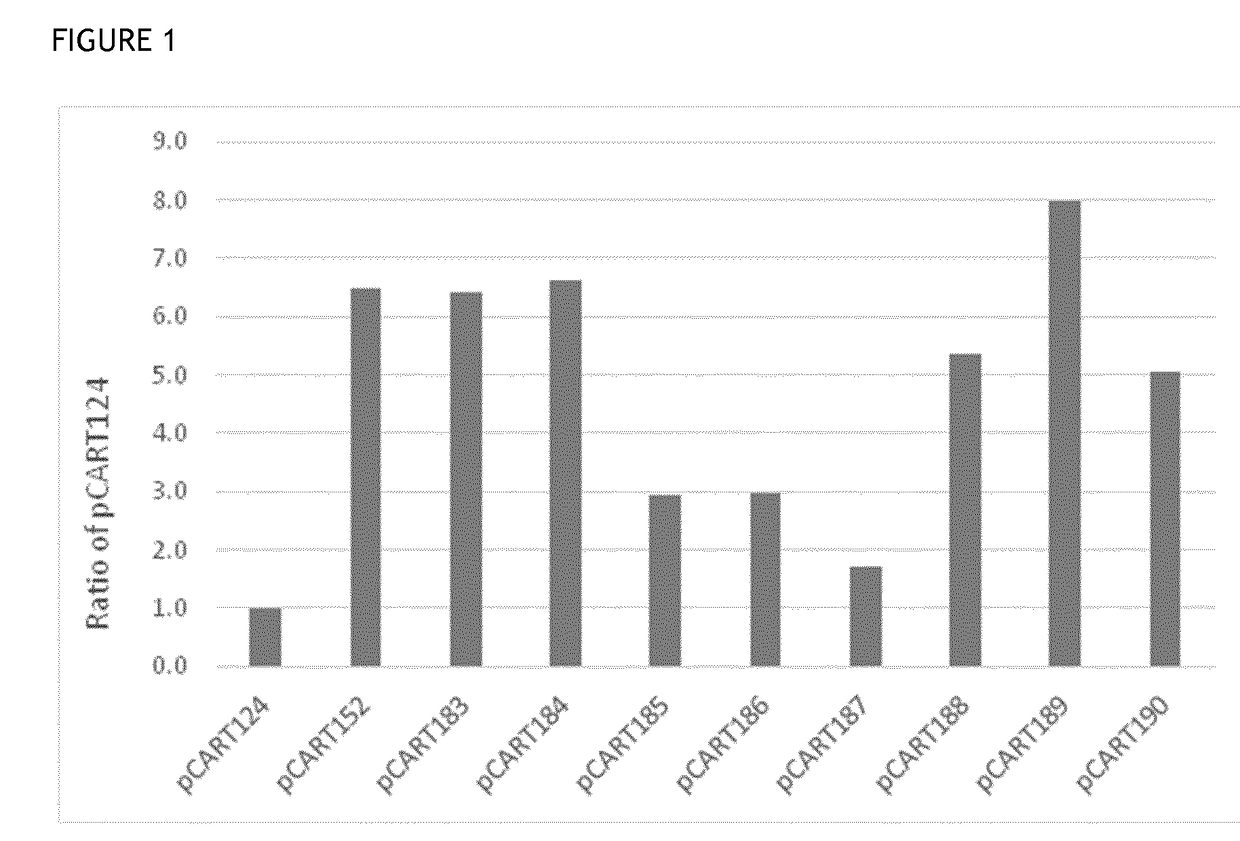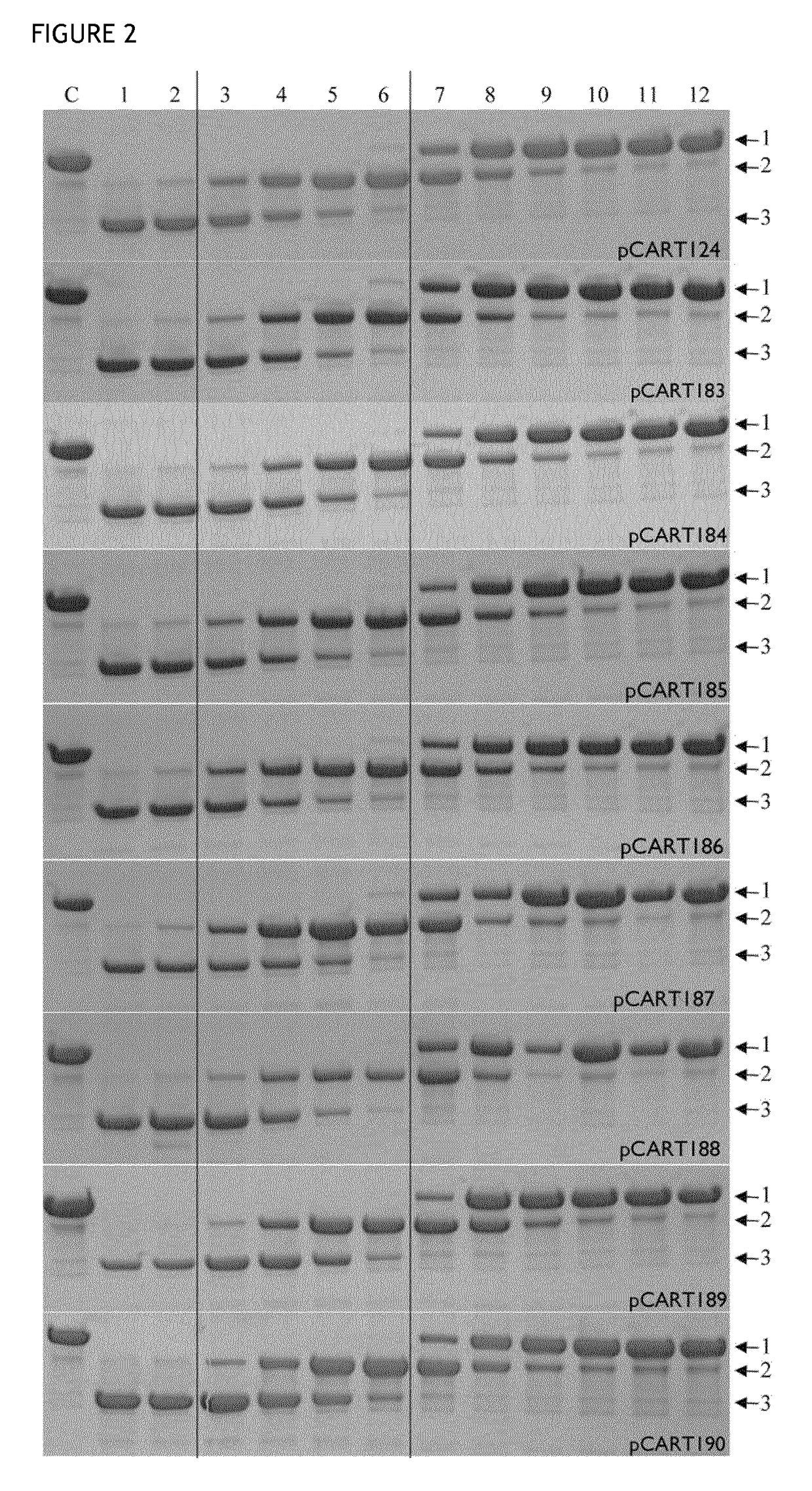Cysteine protease
a protease and cysteine technology, applied in the field of new polypeptides, can solve the problems of reducing the efficacy of ides, reducing the likelihood of problems, undesirable or even harmful complications, etc., and achieves the effects of reducing immunogenicity, reducing immunogenicity, and increasing the efficacy at cleaving igg
- Summary
- Abstract
- Description
- Claims
- Application Information
AI Technical Summary
Benefits of technology
Problems solved by technology
Method used
Image
Examples
example 1
Polypeptides, Production and Purification
[0130]The mature IdeS molecule was analysed and regions suitable for mutation were identified. In some cases an in silico assessment was used to evaluate the likely outcome of a mutation. Having decided on the sequence of each polypeptide, cDNA encoding each polypeptide were generated at GeneCust, Luxembourg either by site-directed mutation of a starting sequence or synthesis depending on the number of mutations introduced. cDNA were sequenced and transferred to the pET9a expression vector (Novagene) in frame with a C-terminal 6× His-tag, joined to the C-terminus by a short glycine linker (3× Gly). N terminal methionine was added to improve bacterial expression. The plasmids were transformed (heat-shock) into E. coli BL21(DE3) (Stratagene) and seeded on LB agarose plates containing 30 μg / ml kanamycin. Single colonies were picked and overnight cultures (3 ml LB-medium) were started at 37° C., 250 rpm. The following day glycerol stocks were pre...
example 2
t of Potency (IgG Cleavage Efficacy)
ELISA
[0135]Enzymatic activity was measured using an ELISA-based potency assay. The principle of the ELISA was to coat wells of a multi titre plate with an antibody target (BSA), then incubate different concentrations of IgG cysteine protease polypeptide (test or control) with anti-BSA antibody in the wells, before detecting the quantity of anti-BSA antibody bound to the wells using a detector antibody. The higher the concentration of a given IgG cysteine protease polypeptide in a well, the less intact anti-BSA polypeptide will be bound to the well, giving a lower signal. Similarly, a more potent IgG cysteine protease polypeptide will give a lower signal than a less potent IgG cysteine protease polypeptide when present at the same concentration.
[0136]The reference IdeS BX1001865 was prepared as a titration series in 1:2 dilution steps from 320 nM down to 0.16 nM to allow plotting of a standard calibration curve for the assay. The results achieved i...
example 3
t of Immunogenicity
Competitive ADA Assay
[0156]This assay is based on competition between a test polypeptide and IdeS for binding to anti-IdeS antibody. A pre-incubation of test enzyme and IVIg will enable binding of anti-IdeS antibodies to the tested pCART enzyme. Thereafter the IVIg-enzyme-mix is added to an IdeS-coated plate and any anti-IdeS antibody not bound to test polypeptide will instead bind to the IdeS on the plate. All binding incubations was made in the presence of 2 mM iodoacetic acid (IHAc) to inhibit IgG cleavage and in high salt so that only high affinity binding occurs. After washing, a biotinylated goat anti-human F(ab′)2-specific F(ab′)2 fragment is used as detector. Poor recognition of test polypeptide by the anti-IdeS antibodies in IVIg will result in high binding of the anti-IdeS antibodies in IVIg to the plate, giving a high signal. Good recognition of test polypeptide by the anti-IdeS antibodies in IVIg will give the opposition result. The detailed protocol i...
PUM
| Property | Measurement | Unit |
|---|---|---|
| time | aaaaa | aaaaa |
| time | aaaaa | aaaaa |
| time | aaaaa | aaaaa |
Abstract
Description
Claims
Application Information
 Login to View More
Login to View More - R&D
- Intellectual Property
- Life Sciences
- Materials
- Tech Scout
- Unparalleled Data Quality
- Higher Quality Content
- 60% Fewer Hallucinations
Browse by: Latest US Patents, China's latest patents, Technical Efficacy Thesaurus, Application Domain, Technology Topic, Popular Technical Reports.
© 2025 PatSnap. All rights reserved.Legal|Privacy policy|Modern Slavery Act Transparency Statement|Sitemap|About US| Contact US: help@patsnap.com



